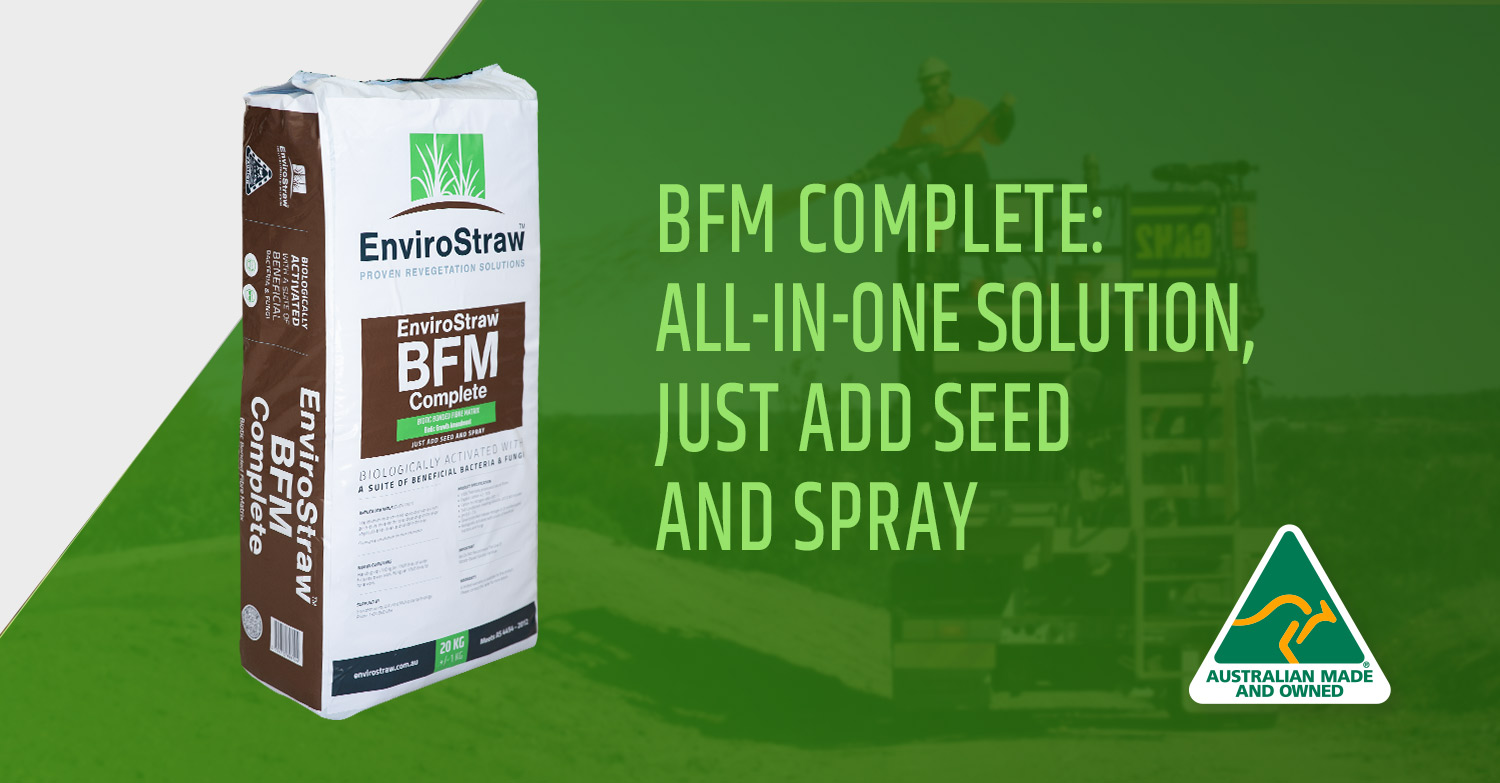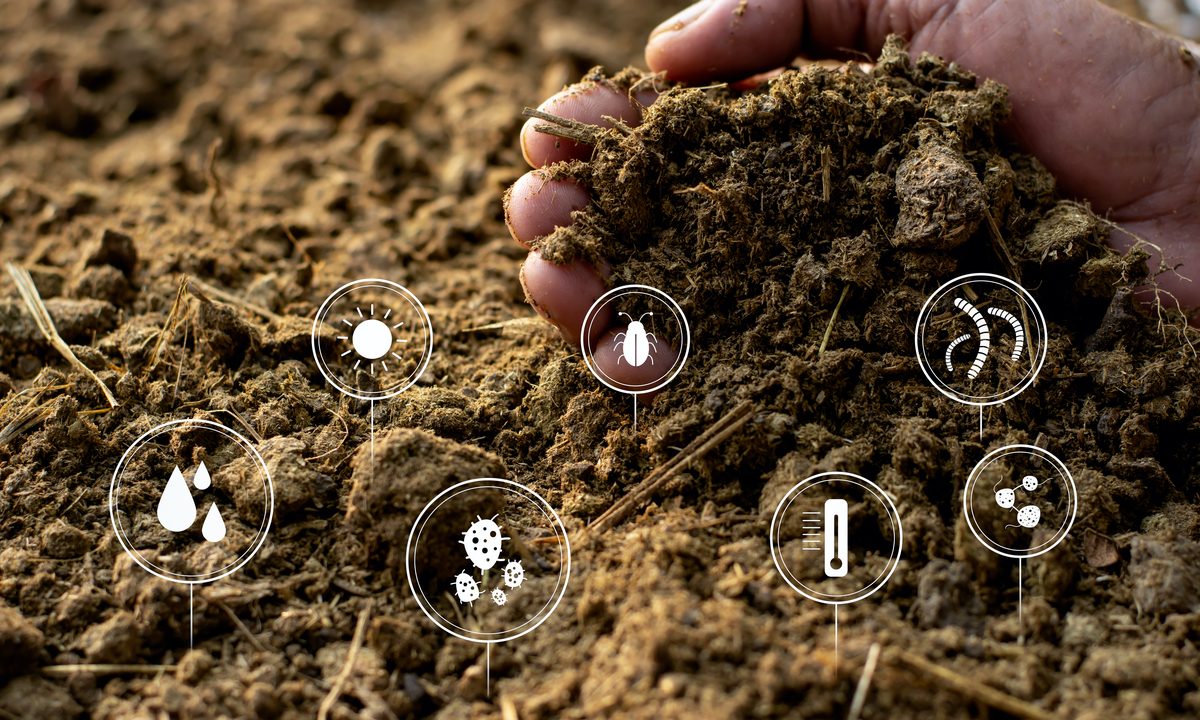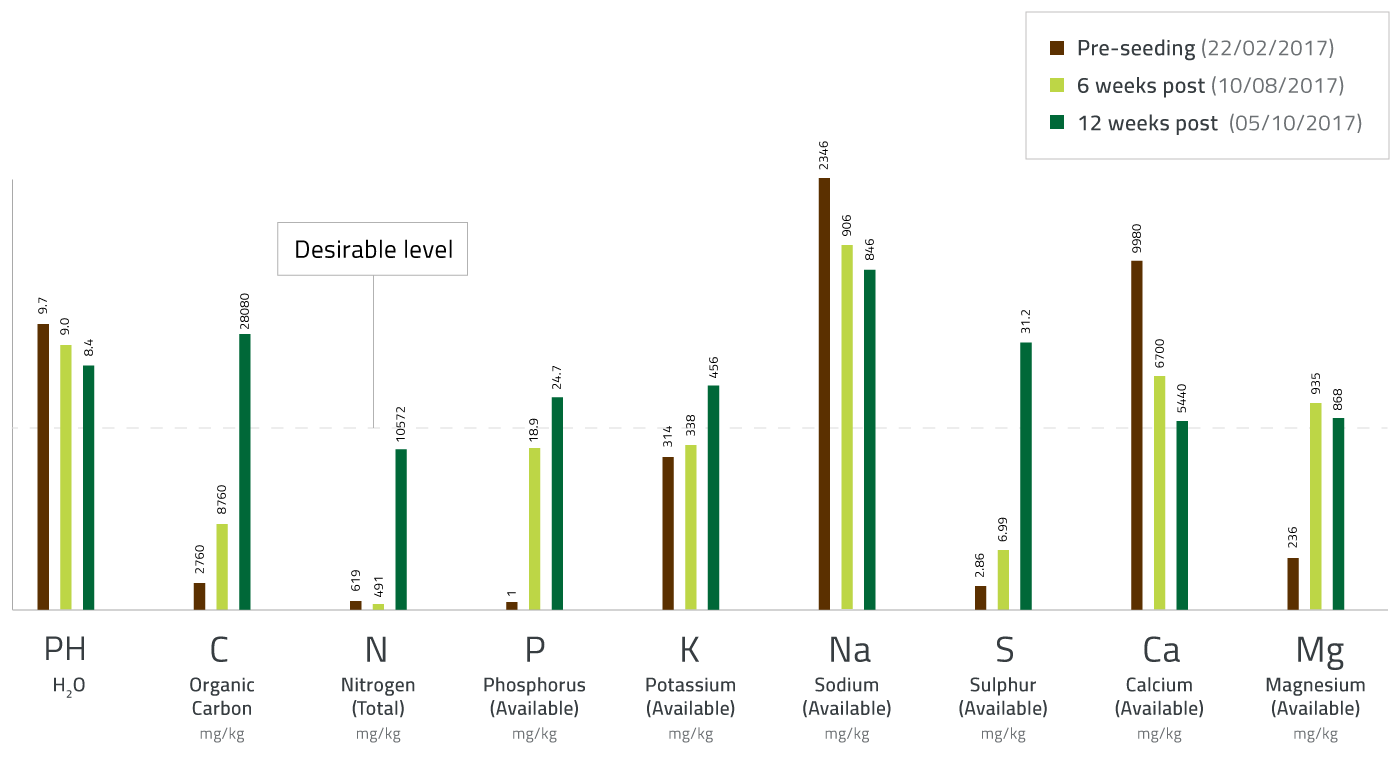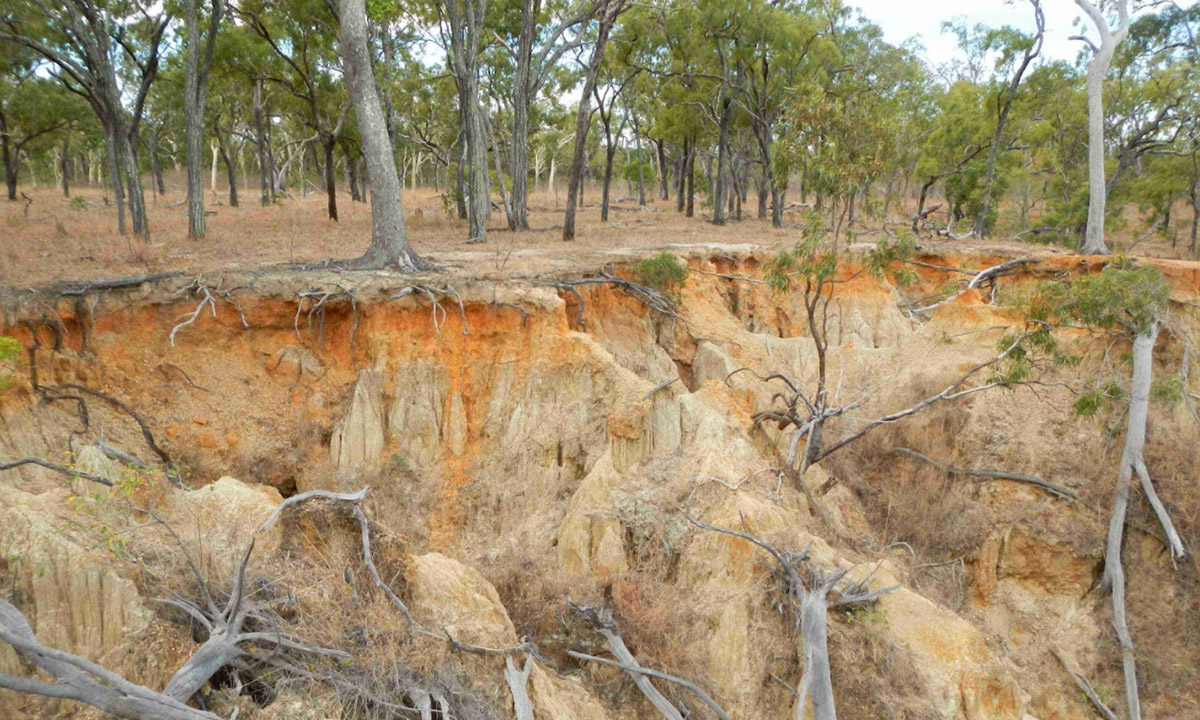
When it comes to a successful revegetation program, soil carbon levels are vitally important.
On-site soils with less than three percent carbon are typically low in nutrients, vulnerable to erosion and lack the ability to retain water. These conditions make it very challenging to establish grass cover, or any kind of plant life for that matter.
Why? Broadly speaking, carbon is the lifeblood of our planet. It’s in almost everything in one form or another. Without stable soil carbon, plants struggle to grow and thrive.
The difficulty with low-carbon soils
Any agronomist or revegetation expert will tell you that low-carbon soils can be very difficult to work with, particularly if they are sandy loam-type soils. This means they don’t have great soil structure to begin with and can be highly susceptible to erosion. Low-carbon soils can also be hydrophobic and high in sodium.
Righting the balance naturally
If you’ve had your on-site soil tested and received a low carbon reading, you have two options. You could import carbon-rich topsoil or a quality compost which can be hard to find as most compost is pasturised at best, which can work well but can also be prohibitively expensive if, for example, your site is in a remote area.
Alternatively, you could use a purpose-designed growth media to restore carbon levels organically. Our signature EnviroMatrix product was formulated for highly problematic soils with low carbon levels. It contains everything you need to build soil carbon naturally and control erosion by addressing the biological, chemical and physical requirements for stabilising and restoring vegetation on disturbed soil sites.
For a fraction of the cost of importing topsoil, EnviroMatrix uses a stable organic material with accurately blended inputs to provide a consistent quality biotic growth amendment that quickly builds carbon levels, enhances water-holding capacity and provides long-term, slow-release insoluble, plant nutrition to nourish establishing vegetation and feed the developing soil microbiome.
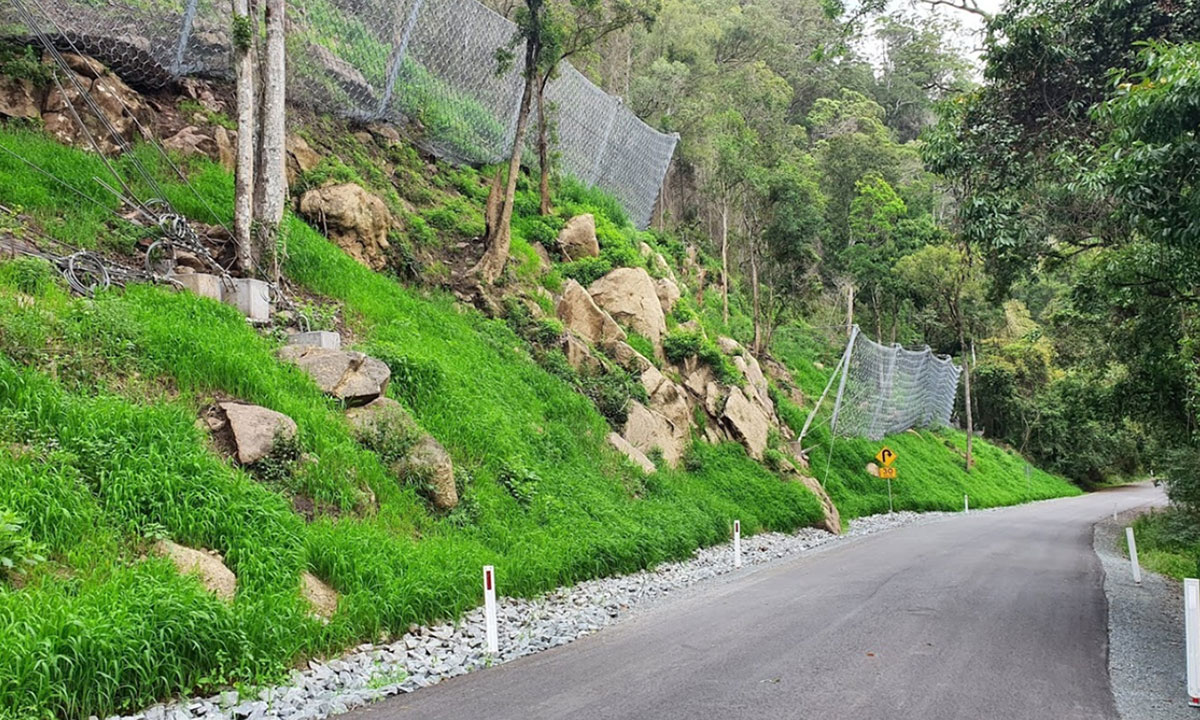
When carbon levels are where they should be, soil health improves overall. Benefits include:
- Increased water-holding capacity
- Reduced erosion
- Improved nutrient retention
- Increased microbial activity
- Better vegetation establishment
- A long-term, self-sustaining outcome
Biotic Growth Amendments like EnviroMatrix provide a suite of microbes to build soil health fast and encourage deeper plant rooting. A range of polymers hold the applied biotic growth amendment in place for up to 12 months, meaning a watering program is not required.
In addition to EnviroMatrix, our team of soil scientists has also found a way to enhance microbial activity in the soil using specially developed soil conditioners, biostimulants and probiotics applied at a significantly lower rate than other soil ameliorates such as gypsum and compost, for example. This provides an immediate boost to carbon and calcium levels in the soil, and we call this the BioGrowth™ Regenerative Revegetation program.
The soil test data below from the Maule Creek mine site clearly demonstrates the ability of our program to balance soil and build carbon levels for less than you’d pay for imported topsoil. You’ll notice how organic carbon levels increased, sodium levels decreased and calcium-to-magnesium ratios balanced out, all without importing high volumes of topsoil, gypsum or lime for example.
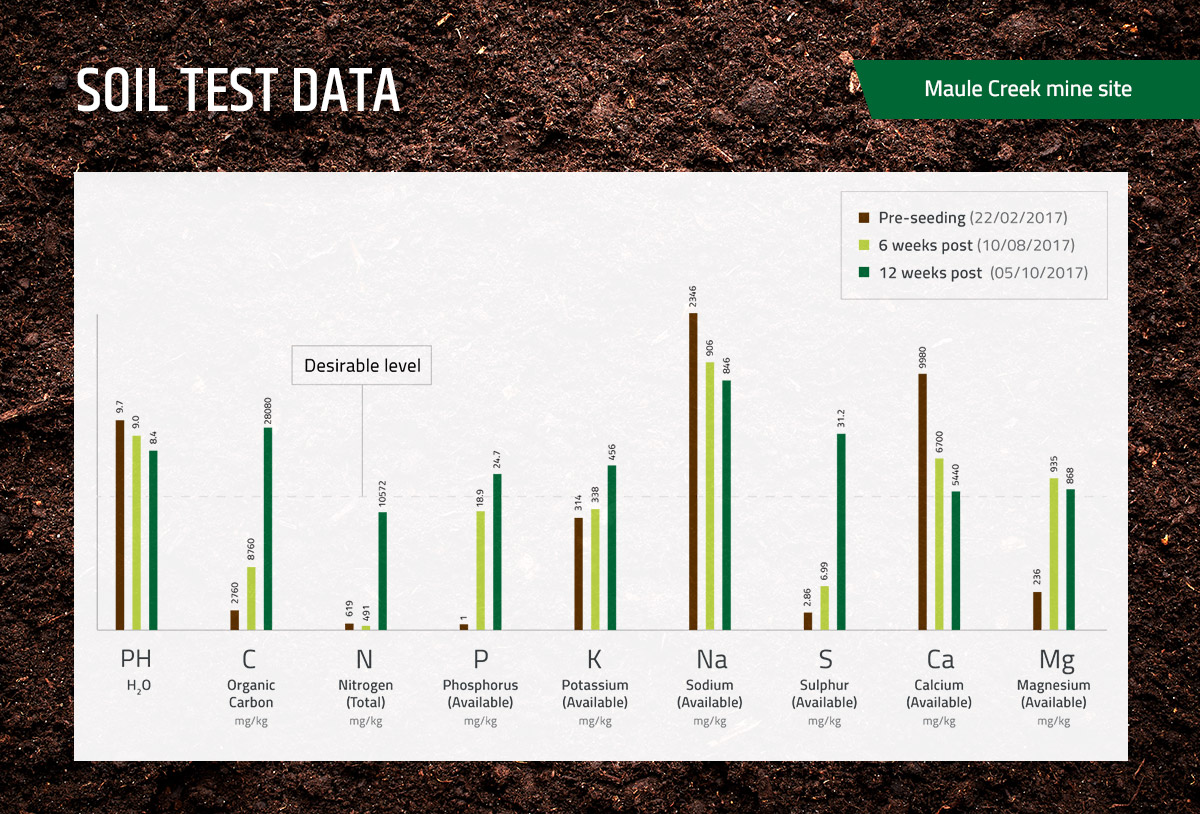
Our team can assess your site parameters and let you know if EnviroMatrix and the BioGrowth™ Regenerative Revegetation program are right for you.
